
It’s a no-brainer that sleep is vital for one’s health. That is why so many researchers study the best way to get good quality shut-eye. However, forget chamomile tea and meditating before bed. According to new research, women sleep better next to dogs. That’s right; Canisius College in New York State conducted a study that found that canines make better-sleeping partners than humans or cats.
“We found that women commonly rate dogs as better bed partners than cats and human partners and report that their dogs enhance their sleep quality,” Christy Hoffman, Ph.D., animal behaviorist and lead researcher of the study.
Research Finds that Women Sleep Better Next to Dogs
Hoffman surveyed almost one thousand women living in the United States to come to these findings. The results showed that 55% of the participants shared their bed with at least one dog and 31% with at least one cat. Also, 57% of these women shared a bed with a human partner, while the rest did not. [1]
Hoffman also discovered why dogs seemed to make the best bed companions. The first reason is that dogs’ sleeping patterns, as opposed to cats, more closely resemble those of humans.
“The difference between dogs and cats is not surprising because dogs’ major sleep periods tend to coincide more closely with humans’ than do cats,’” said Hoffman.
However, while there may be benefits of these similar sleeping patterns, more research is needed to know for certain. But Hoffman has some ideas of how this could work.
“In comparison to human bed partners, dogs may be better at accommodating their human’s sleep schedule,” she said. “It’s not uncommon for human bed partners to go to bed at very different times and wake up at very different times. Such differences in partners’ schedules can certainly disrupt sleep. It may be that dog bed partners adapt more readily to their owner’s schedule than do human bed partners.”
Moreover, dogs require certain schedules and responsibilities, such as a morning walk. This kind of regime helps their owners maintain a routine, improving sleep quality as a result.
Stillness and Security
Additionally, dogs tend to stay stiff as they sleep. Anyone who’s slept with a fidgety partner knows how disruptive they could be. However, women in the study reported that their dogs stayed on the bed most of the night instead of felines, who tended to come and go.
“This suggests that cats may be more likely than dogs to create disruptions by moving on and off the bed during the night. In addition, we found that dog owners kept to more consistent bedtime and wake time schedules than cat owners and also tended to go to bed earlier and wake up earlier than cat owners,” Hoffman said.
Here’s the third and most important reason: Canines provide a sense of security to their owners. More so than with cats or even human partners.
“Some dog owners may take comfort in the thought that their dog will alert them in the case of an intruder or other type of emergency; furthermore, a dog’s bark may deter a potential intruder. A cat is less likely to take on this role, and so, may not provide psychological comfort in the same way a dog might,” said Hoffman.
The Best Partner for Quality Sleep
However, while the study suggests that dogs are the perfect slumber buddies, their benefits are subjective to each case. For example, a dog could snore or make the bed too hot. Additionally, there are many owners who find that their cats help them sleep.
Keep in mind that the research was based on how the volunteers perceive their pets’ effects on their sleeping quality and duration. As a result, more objective research is needed to definitively consider dogs the superior sleeping partners. However, Hoffman believes that these studies could be beneficial as many American households have pets.
“It will be valuable to continue this line of research so we can develop a clearer picture of the contexts under which pets and their presence in their owner’s bed may positively impact sleep quality, and the contexts under which co-sleeping with a pet may be detrimental to one’s sleep quality,” she said.
For instance, research has also shown that women sleep better while alone than with a human, but many believe in the opposite. Future research could use Fitbit-like devices to objectively track the sleep quality of people in different sleeping conditions.
20+ People Honestly Showed What Their Jobs Are Really Like
It’s impossible to argue with the fact that all jobs are important. We see people specialize in different things every day. They could be doctors, school teachers, cashiers, or cleaners. All jobs contain things that outsiders have no idea about.
We at Bright Side have found Internet users of different professions that revealed the invisible side of their jobs. And in the bonus section, you’ll find a tweet about the difficulties that shop assistants have to deal with.
“My sister works in a photo center and this is who she was asked to take a picture of.”
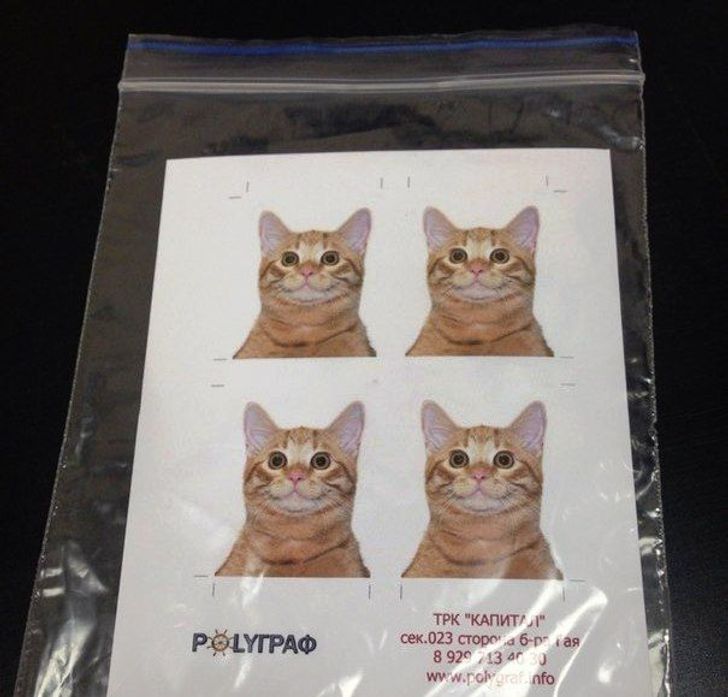
This is the hand of a doctor after removing his medical gloves after 10 hours of being on the clock.
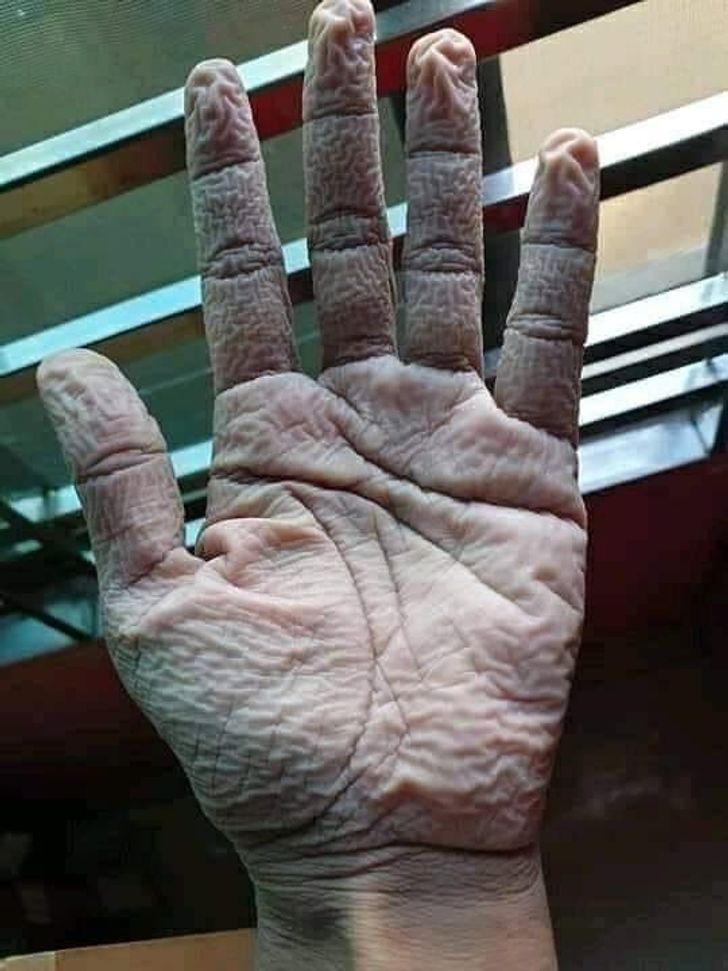
“A group of teenagers came in just to trash the theater. I was one of the people that had to clean it.”

“I work in the Arctic and Antarctic and find it much more convenient to wear my watch on a lanyard than on my wrist because of all of the layers I wear.”

“This watch has been to Antarctica countless times and to the geographic North Pole 12 times.”
“Be nice to your trash man when it’s raining and it’s 30 degrees outside. We’re not invincible. This is my hand after working 4 hours in bad weather.”
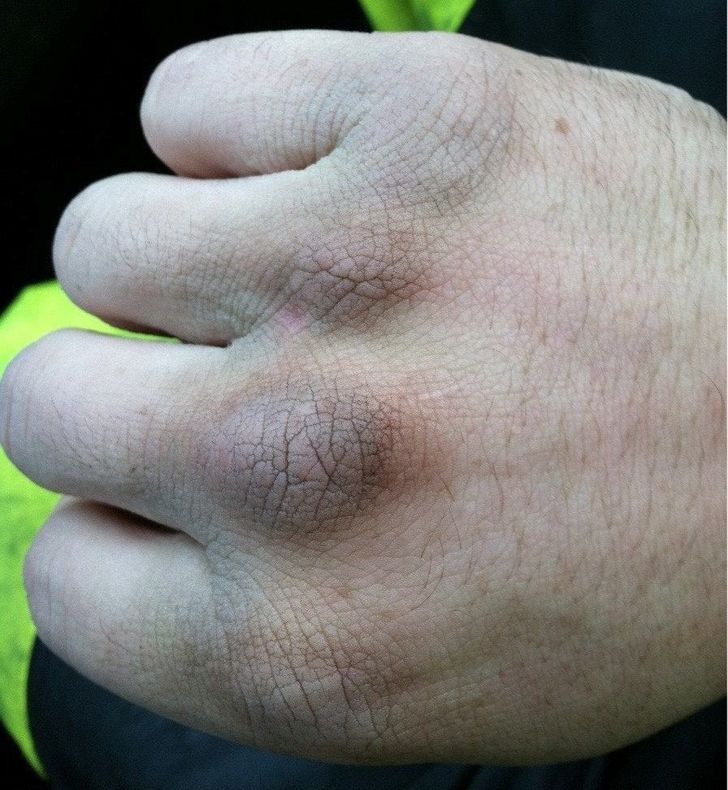
“I work at a hotel these days and went to see if a room was mislabeled as dirty. This is what I found.”

“I kept my hotel key cards from my first year working for the airlines.”

“Working hard as a truck driver has its advantages: the views!”

“My mom works at Amazon and she sent me a photo of one of the trucks she loaded.”

“I work at a call center. Whenever I get a particularly rude caller, I like to draw what they might look like. Here’s Lorraine from today.”

“I work in a fast-food restaurant, and this is our broom. My boss says it’s too expensive to replace it, yet he drives a Lincoln.”
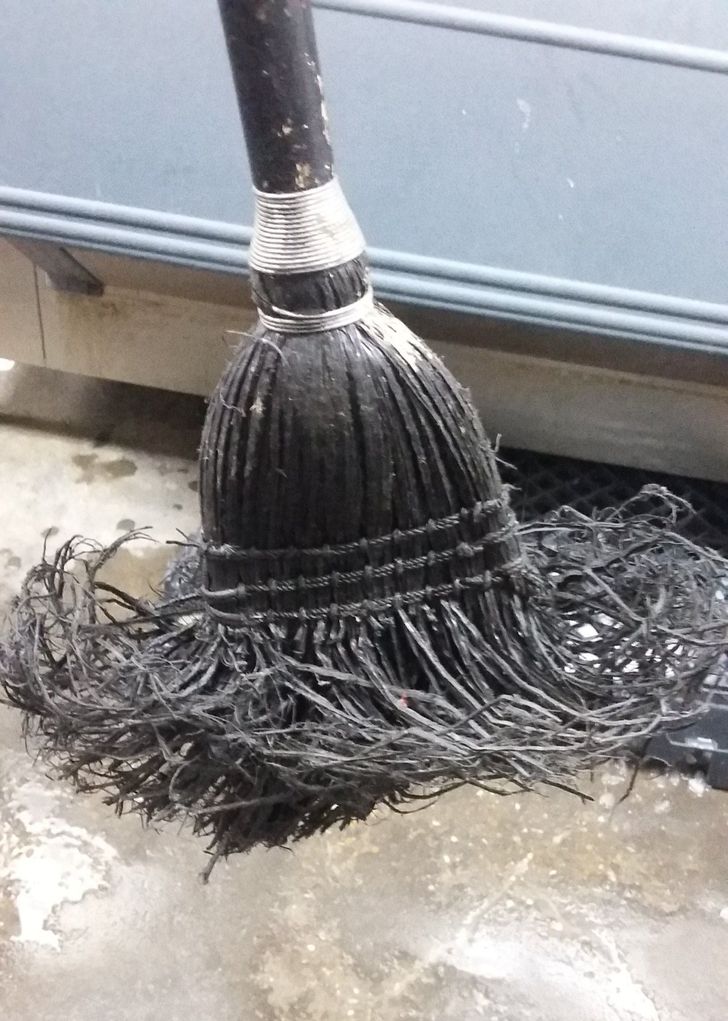
“I work in the film industry and I’m usually too shy to ask for a picture with an actor, but I had to get one with this little guy.”

“Every staple I removed in one year at my boring office job”
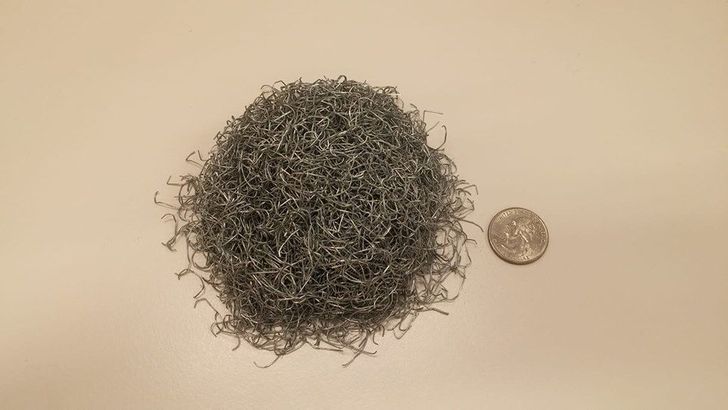
“I work in a −25°F freezer every day.”
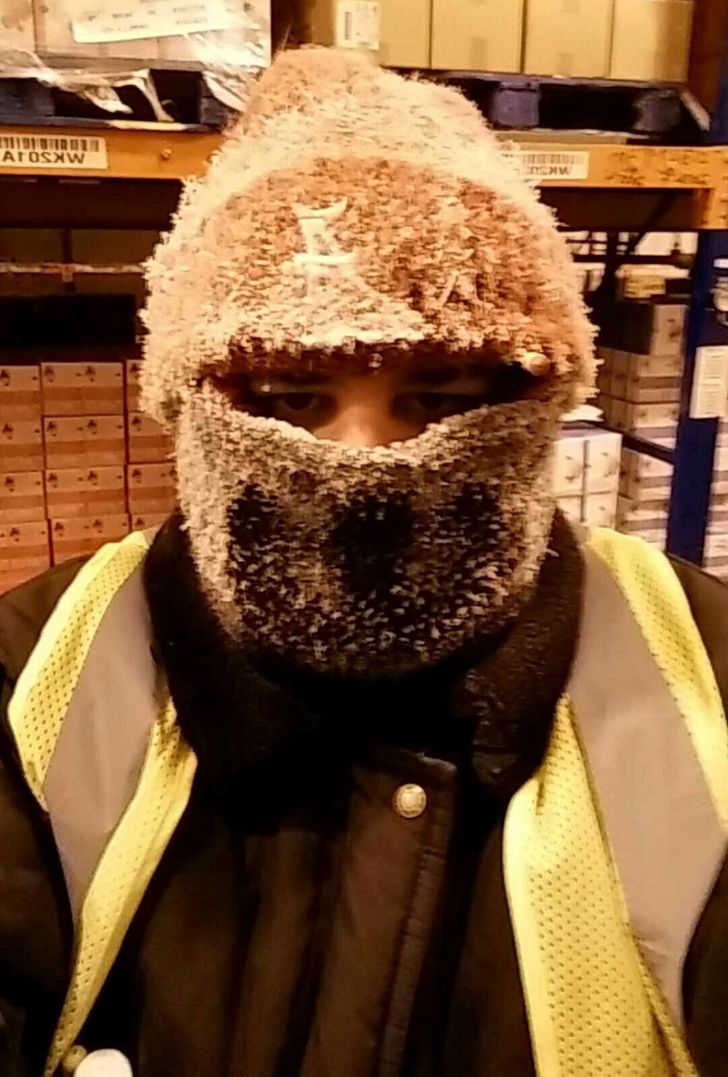
“I work at a cat shelter. These are the ’can we keep him?’ photos I sent to my partner. It worked.”
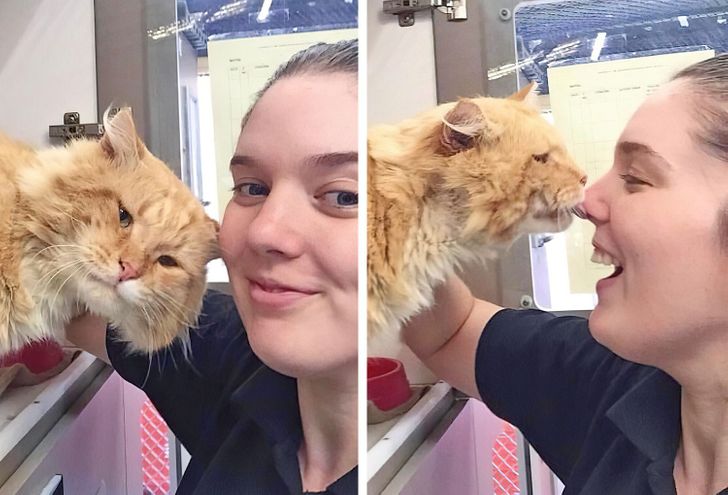
“My job involves putting labels on boxes. I hold them with my left hand and put them on the box with my right. This is what my ’clean’ hands look like.”
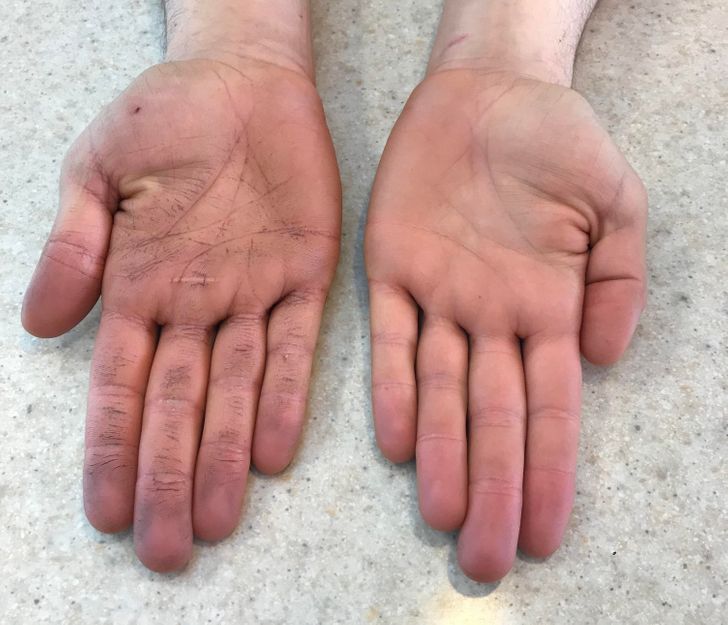
“I got transferred to a new location at work. This is my new break ’room.’”

You can work anywhere if you’re a programmer.

“I work as a professional princess on weekends. My kitty insists on inspecting each costume for detail accuracy.”

“I work at a hotel — a guest left this when they checked out.”

This is a bathtub full of playing cards.
“So, I work in a movie theater. ’Family of the Year’ award goes to these guys!”

“I’m a seaman. We live alone in these rooms. Depending on your position, the room can be better and bigger. This is mine.”
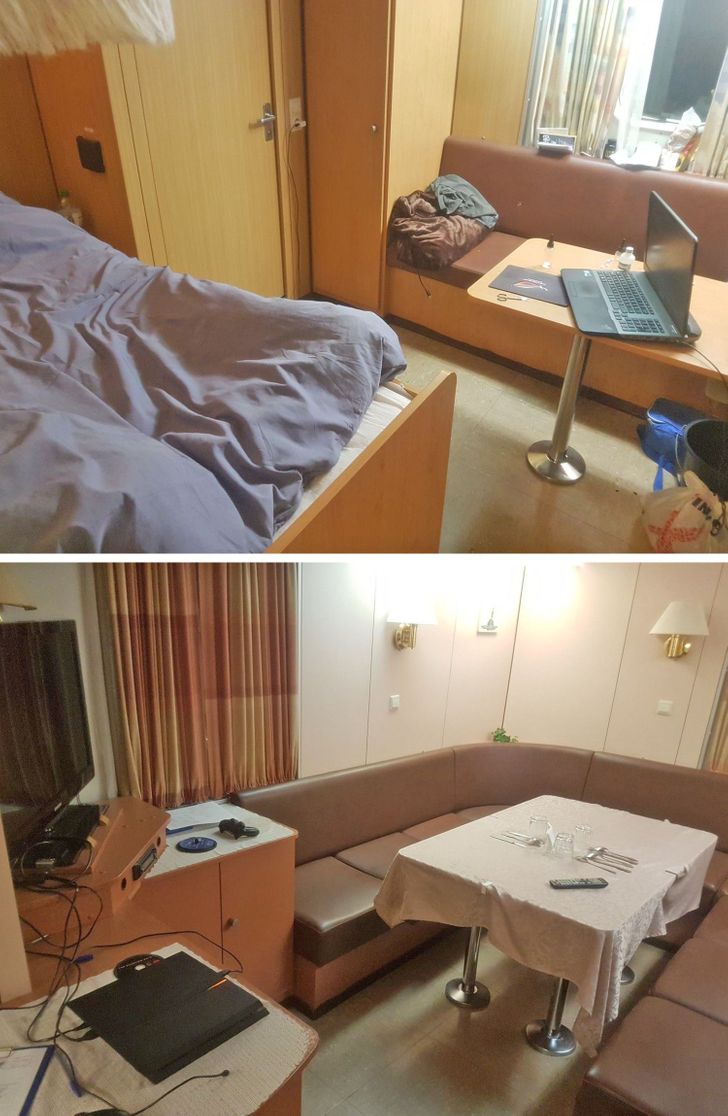
“I have my own toilet and shower.”
“Took this photo yesterday at work. Thought I’d share it with you guys.”

Bonus: the harsh work of shop assistants

What is your job and what downsides are there to it?
Preview photo credit AwanishSharan / Twitter, SubzeroMK / Reddit



Leave a Reply